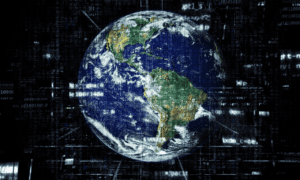What does the Federal Reserve Bank (the Fed) have to do with Ponzi schemes? According to many, the two share something in common. That is, they work similarly. Let’s start with the Ponzi scheme.
Charles Ponzi was a successful swindler back in the 1920s. Up to date, he remains one of the most notorious con artists in history. Therefore, there’s even a scam conned after him. The Ponzi scheme is essentially an investment system. It is a pyramid-style system. In other words, it relies on many contributors.
Those at the base support those at the top. Charles Ponzi lured people into a postal reply coupons investment. The hook was a lavish promise. A 50% profit in only 45 days. People rushed to invest. However, they lost money. Charles only repaid a few early investors. The rest of the money became his. The scheme went on for two decades. In the end, Ponzi was caught.
Apparently, there’s not much similarity between this and the Fed. However, some economists would argue. So, let’s see why. Here is their explanation.
The Similarity Between Federal Debt and the Ponzi Scheme
According to some, the similarities begin at the system’s very roots. Charles Ponzi’s scheme started with a lie. He promised people significant returns. Hence, they invested money with him. The Fed did more or less the same. Theoretically, it pledged to regulate the country’s economy. Thus, people could be safe whether the economy bloomed or not.
Nonetheless, many believed it failed. They consider the Fed partially accountable for the 1929 Depression. Furthermore, they think it’s guilty of the current recession too.
Secondly, the Fed takes money from people. Yet, it gives nothing in return. This fits the Ponzi scheme pattern too. Basically, people invested. However, they received no profits. Now, the purpose of the Fed is also safekeeping. Just like any other bank, it safeguards money. You deposit it in an account. Then, rest assured it’s in trustworthy hands.
Yet, the problem stems from this habit. Many people put their money in the bank. Hence the bank gathered a considerable reserve. This allows it to lend. By lending, it uses contributors’ money. But more importantly, it creates demand. This demand for cash is dangerous. It leads to inflation. Also, it can lead to collapse if the borrower can’t pay the bank back. And all this because the bank has money. And money translates into power – the power to manipulate the market.
Thirdly comes the consequence. The systems resemble in this regard too. So, let’s focus on Ponzi first. His plan was flourishing. So, why did it tumble? Because of the investors. Gradually, people asked for money. Some wanted their profits. Others wanted to withdraw their investments. Charles couldn’t provide either. And he didn’t want to. So, people started complaining. Hence, no new investors joined the scheme. Consequently, the pyramid collapsed. Many expect this to happen with banks too.
The Potential Consequences on Economy and Consumers
So, what if it does? Well, some banks did collapse in the past. And the consequences were never pleasant. Their collapse caused disruptions for investors. But the biggest concern remains unsustainability. Theoretically and practically, massive withdrawals are unlikely. Not everyone wants to withdraw money from the bank. And even those that do only take portions of their money. However, banks can cause crises because of their activity. Much of their wealth and power lies in loans, which cause inflation.
Therefore, the money we deposit loses value. Moreover, the Fed also has another secret tool. The ability to print money. This can have drastic economic impacts too. The more money printed, the higher the inflation. And programs such as the Covid-19 stimulus packages further worsen things.
Money that comes into being from nothing is dangerous. This happens with loans. And it also happens with printed money. It is dangerous because it diminishes the value. Therefore, real hard-earned money is worthless.
In conclusion, regular people only lose. On the one hand, they lose the money they give to the Fed. Because this money loses value. Furthermore, the entire economic system suffers due to inflation. Thus, all consumers’ money is affected. So, it’s a lose-lose situation.
Furthermore, there is nothing people can do. Let’s also take a practical example. In 1913, the Federal Reserve came into being. Back then, Federal Reserve Notes were worth 96% more in real value than today. Therefore, $1 million from 1913 would only equal $40,000 today.
Nonetheless, the Federal Reserve Bank is here to stay. In 1913, Congress legitimized it. This happened with the passage of the Federal Reserve Act.
Bottom Line
The Federal Reserve Bank, just like any other bank, has great power. Moreover, unlike regular banks, the Fed controls the entire nation. However, like all the other banks and Ponzi’s schemes, it supports a fragile system. One in which people invest and lose. One that promotes inflation and faces the risk of collapsing.
All rights reserved to Diamond Shield Management Scam Prevention Department.



















































